The top 10 most popular Blogs from 2021
By Tom Jordan, Queensland Memory | 17 January 2022
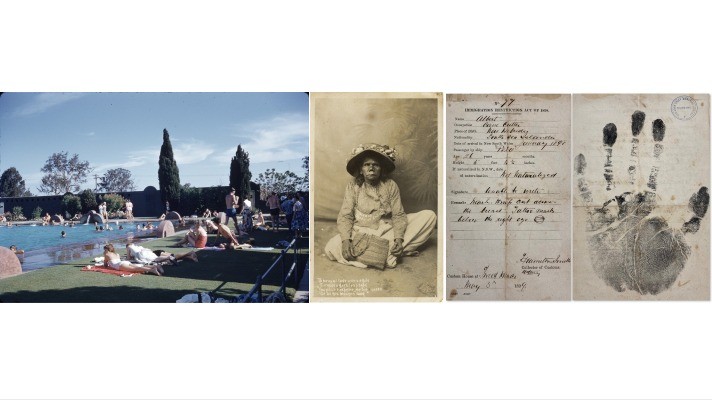
Top 3 most viewed blogs of 2021
With the end of 2021 approaching, we are taking a look back at our social media platforms to see what were the most popular posts from the year and have a closer look at the collections and stories associated. This blog takes a look at the top 10 most viewed John Oxley Library blogs posted in 2021
JOHN OXLEY LIBRARY BLOG TOP 10
Number 10:
‘The Coming of the Light’ Celebrating 150 years of Christianity in the Torres Strait 1 July 2021
This blog commemorated the 150th 'Coming of the Light,' a day held by Torres Strait Islander communities to celebrate the arrival of Christianity to the islands.
In 1871 on 1 July representatives from the London Missionary Society arrived on Erub Island (Darnley Island) accompanied by South Sea Islander evangelists and teachers.
Clan Elder and Warrior, Dabad greeted them on their arrival. Ready to defend his land and people Dabad walked to the water’s edge when the Rev Samuel McFarlane dropped to his knees and presented The Bible to Dabad. Dabad accepted the gift, interpreted as the ‘Light’, introducing Christianity to the Torres Strait Islands.
The people of the Torres Strait Islands adopted the Christian rituals and ceremonies and continued to uphold their connection to the land, sea and sky, practicing their traditional customs, and cultural identity referred to as ‘Ailan Kastom.’
Each year on 1 July, ‘The Coming of the Light’ or ‘Keriba Lagaw Buiya’ in traditional language is a day of celebration, performance, oral tradition and reverence.
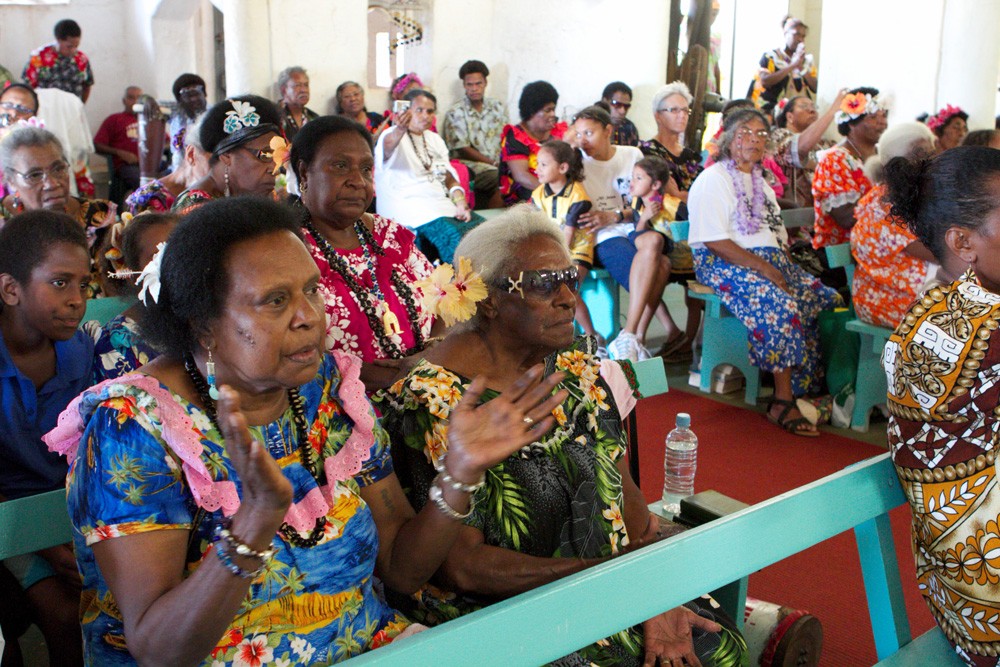
Sarah Scragg, 32197 Church service at All Saints Anglican Church, Erub Island, image 32197-0001-0016, John Oxley Library, State Library of Queensland.
Number 9:
Dundalli: Aboriginal Resistance Hero
This blog post tells the story of Dundalli, an Aboriginal leader central to Aboriginal resistance to colonisation in the mid 1800s.
Dundalli was chosen as a Turrwan (Yuggara word for 'Great Man') to conduct restorative justice for the shooting and poisoning of Aboriginal people by settlers in colonial Brisbane. For over 10 years starting from 1843, Dundalli attacked settlers, conducted robbery causing serious bodily harm and killed livestock. Aboriginal people saw him as a resistance leader, but the new European settlers saw him as a criminal and murderer. However, Dundalli was only fulfilling his role as a leader within a warrior society ‘warfare is that of reciprocity: if a harm has been done to an individual or a group…they must repay…by an injury that at least equals the one they have suffered’
Eventually Dundalli was arrested and found guilty in the eyes of the court of two counts of murder and one of robbery, leading to his hanging in 1855. The hanging took place at the Queen Street Gaol, where the present day General Post Office now stands in Brisbane, with spectators crowded about Windmill Hill. A large crowd of people both Aboriginals and European settlers attended the execution. As Dundalli climbed up the ladder to the platform of the gallows he called out to his fellow Aboriginals to continue the fight and to revenge his death. He shouted this in his own language and kept repeating his call until he was hanged.
This post includes further reading and information sources on this interesting man,
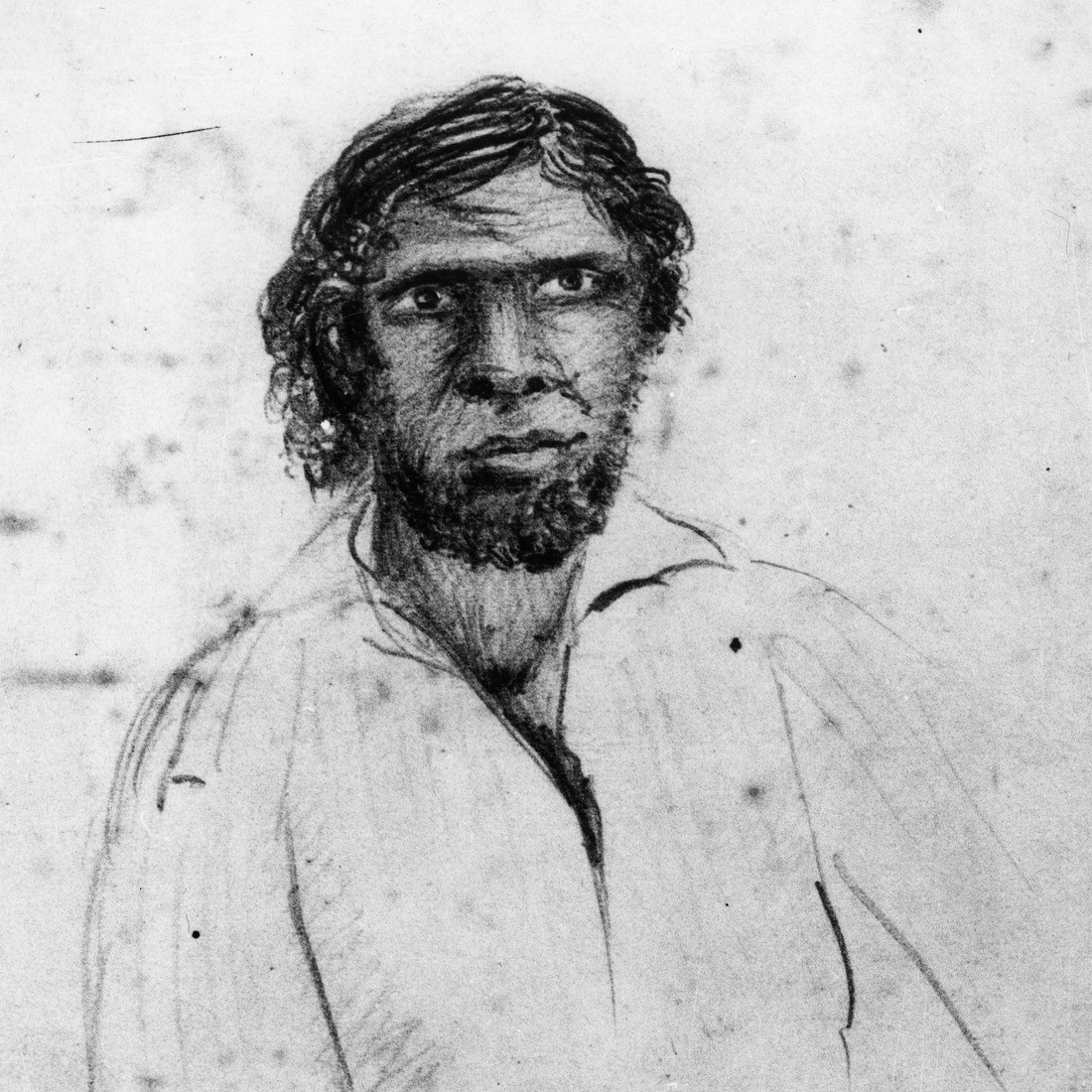
Sketch of Aboriginal Australian Dundalli. Sketch of Dundalli made by Silvester Diggles, 5 December, 1854. Negative number 11307, John Oxley Library, State Library of Queensland.
Number 8:
Tindale Genealogical Collection 1928-1960: a treasure of the John Oxley Library
This blog highlight the Tindale collection:
a key research tool Australian Aboriginal people can access to discover evidence of their family lineage and connection with community.
In 1938 Norman Tindale, an anthropologist and entomologist with the South Australian Museum, began visiting Aboriginal people living on government missions in Queensland. By the end of the 1960s Tindale had photographed Aboriginal people, collected cultural material, and recorded a significant number of genealogies in hand-written field notes, usually with one extended family included on each chart.
The Tindale Collection is a unique and significant resource providing evidence for Native Title claims and assisting thousands of Aboriginal people to trace their family connections, particularly in areas where traditional knowledge has been lost.
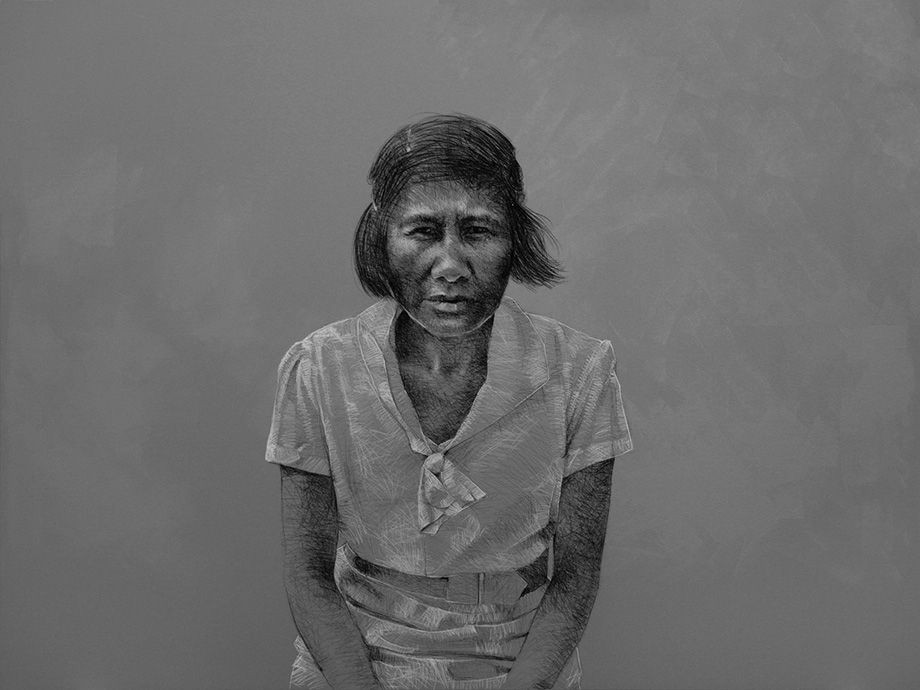
Annie Sibley, nee Ah Sam, born 1897 from Palm Island community. Norman Tindale Collection, negative 1128, John Oxley Library, State Library of Queensland.
Number 7:
A tale of quarantine in Queensland: Maria Steley diary 1863–64
This blog describes the story of Maria Steley, a Welsh fourteen-year-old who travelled to Australia with her family in 1863. In her diary, Maria provides a fascinating yet heartbreaking insight into the voyage and time spent in quarantine.
The diary also contains useful information about what clothing and food Elenor should bring with her when she comes to Australia, descriptions of the weather, tales of the activities on board ship and the food on board.
Eventually the Steley family settled in Rockhampton with Maria’s older sister Matilda, who was already living in Australia with her husband and children. The Steleys then moved to Maryborough, where Maria’s father Abel was involved with the Burrum Coal Mine.
Sadly Maria’s life was cut short on 14 November 1869, dying at age 20 in a horse-riding accident on her way home after a visit to Agnesvale Homestead, west of Maryborough. She was buried at Agnesvale Station the following day.
Maria’s diary was passed on for four generations until it was donated to State Library in 1970. You can view the digitised diary via our One Search catalogue.
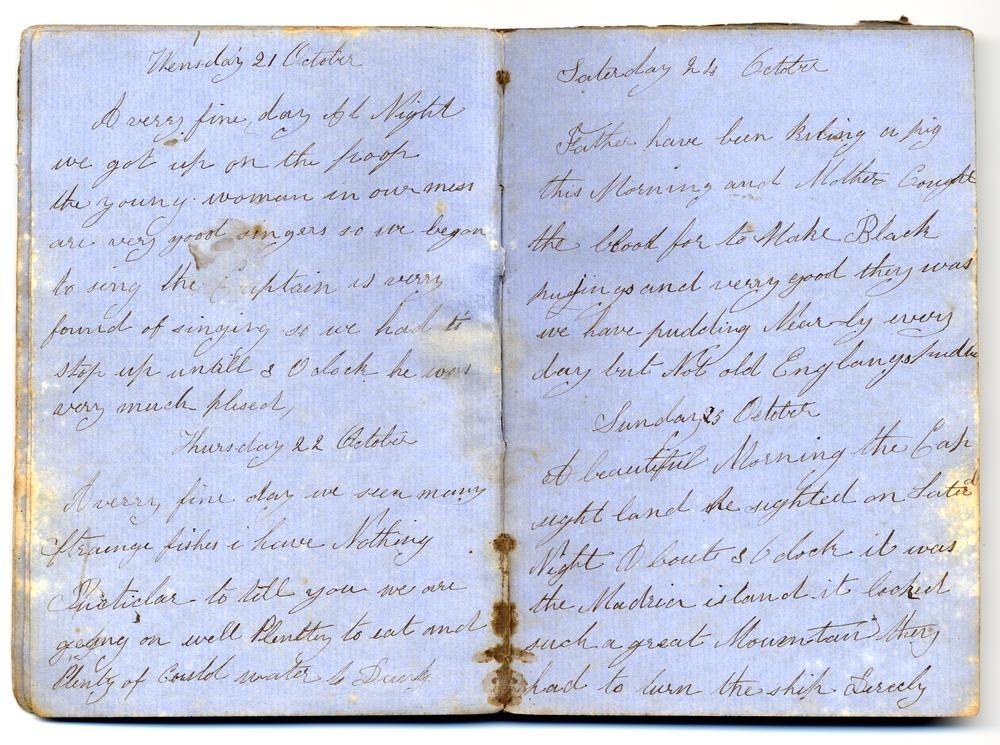
Diary of Maria Steley, John Oxley Library, State Library of Queensland
Number 6:
History of Brisbane's Victoria Bridge
This post from January gives a glimpse into the long and interesting history of the Victoria bridge in central brisbane. Since 1865 there have been several versions of the bridge built to connect Brisbane's CBD to South Brisbane, each one dealing with issues like floods, decay, and traffic congestion as the city grew around the heart of the city.
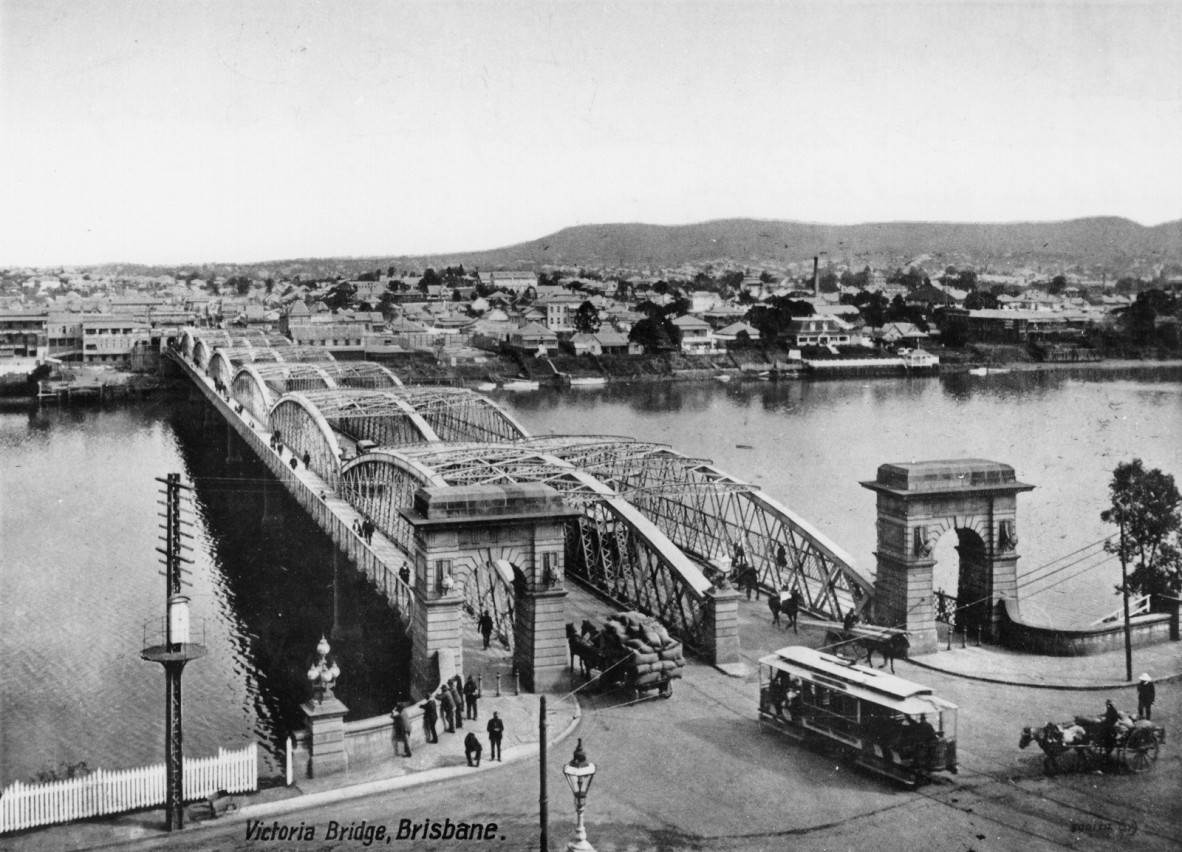
Traffic entering and leaving the second permanent Victoria Bridge in Brisbane, ca. 1913. Negative number 94521, John Oxley Library, State Library of Queensland.
Number 5:
Remembering the 2011 Queensland floods
2021 marked 10 years since the devastating Queensland floods of January 2011. Parts of Queensland including the Lockyer Valley, the Darling Downs, Ipswich and Brisbane were inundated with floodwaters. Approximately 5,900 people were evacuated from their homes during the crisis with 28,000 homes in need of rebuilding in the aftermath.The 2011 Queensland floods would also claim the lives of 33 people.
To commemorate the 10th anniversary, State Library curated a selection of images, videos and other collection materials on our online engagement platform, Explorer. This blog shared some of the collection highlights from the 2011 floods.
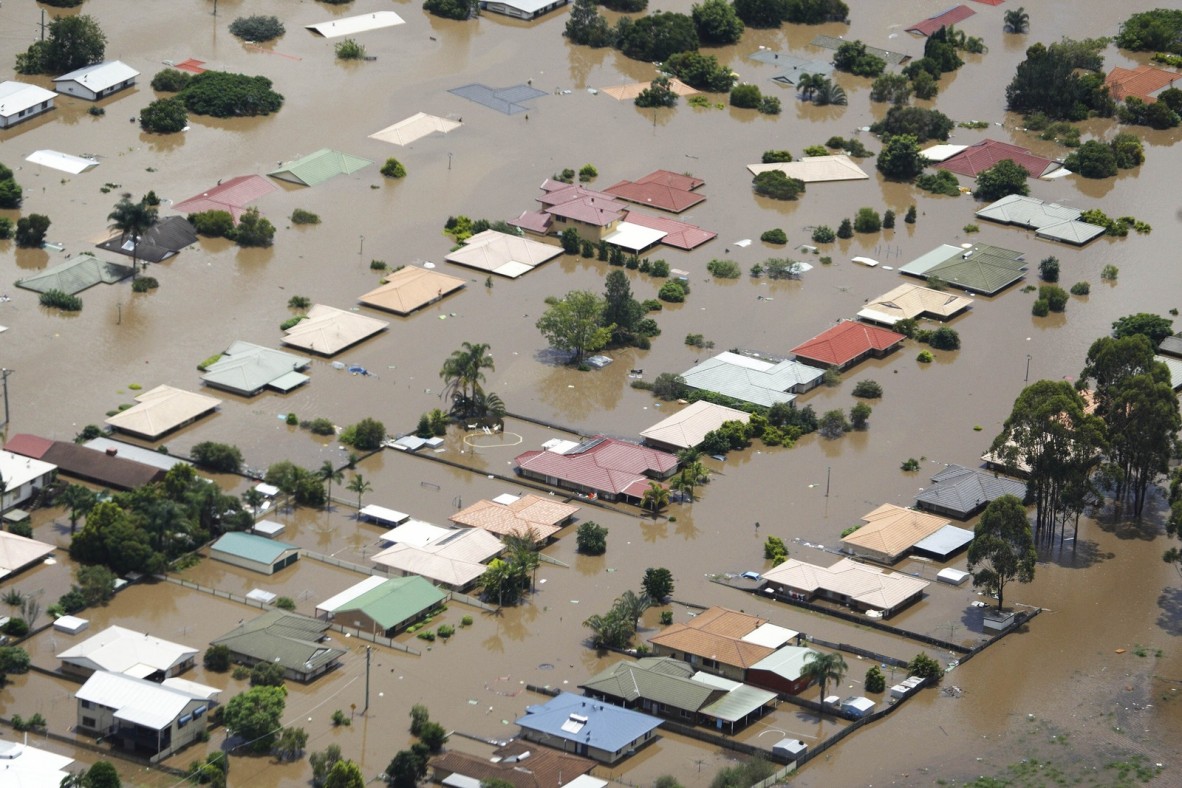
Widespread flooding amongst houses in the Ipswich region, Queensland, 2011. Photographer: Dean Saffron. From Dean Saffron Queensland Flood photographs 2011. State Library of Queensland. Image number 28001-0001-0043
Number 4:
Maino – The Last Mamoose of Yam Island, Torres Strait
This blog shares the story of the great tribal leader and Statesman, Maino Kebisu, son of a powerful warrior leader of the island Tutu. Maino became the Mamoose (Torres Strait name for 'Chief') in the 1885 after the death of his father.
Upon becoming the Mamoose, Maino very quickly adjusted to the changes occurring within the Torres Strait, focussing on the shifts in power that were happening at the time. He aligned himself with Banner, Sir William Macgregor and other officials to establish a permanent base on Yam island for the Tudu People. Maino worked through many different realms of governing, including traditional, religious, and governmental channels to provide a foundation on which the people of Tudu could continue to live prosperously.
Read more on this interesting man through the various newspaper articles of the time that mentioned Maino.
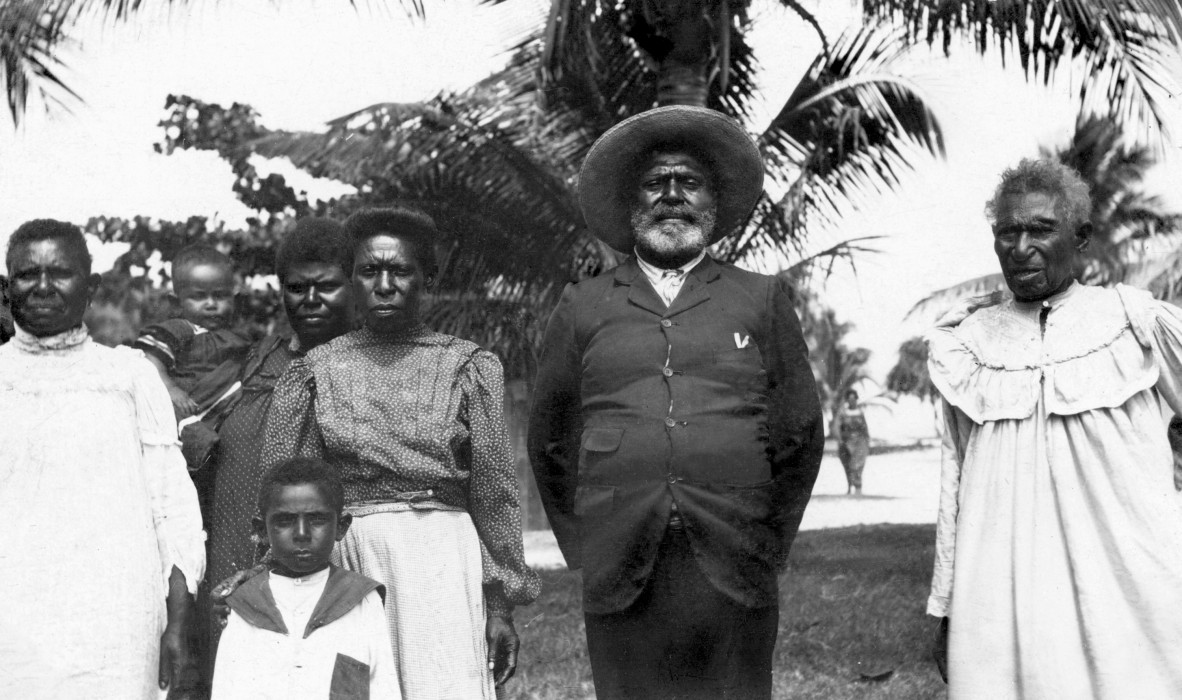
Maino and family at Yam Island, 20 July 1911. Queensland State Archives, Item Representation ID DR5856, Item ID ITM1443446.
Number 3:
Blackbirding was a term used by Europeans to soften its real meaning, and in the language of those families who still seek their loved-ones - it refers to the 'boats that steal people' - slave traders who enticed South Sea Islanders to board their ships and take them to a land where they were enslaved on plantations far from their homelands, many died, some were returned, others never saw their families again, remaining in Queensland to eek out a living in a predominantly white society.
Tucked away in an envelope held at the John Oxley Library and marked 'Kanaka papers' are powerful reminders of the estimated 62,000 'sugar-slaves' brought to Queensland between 1863 and 1904. This blog highlights the stories encased in this envelope.
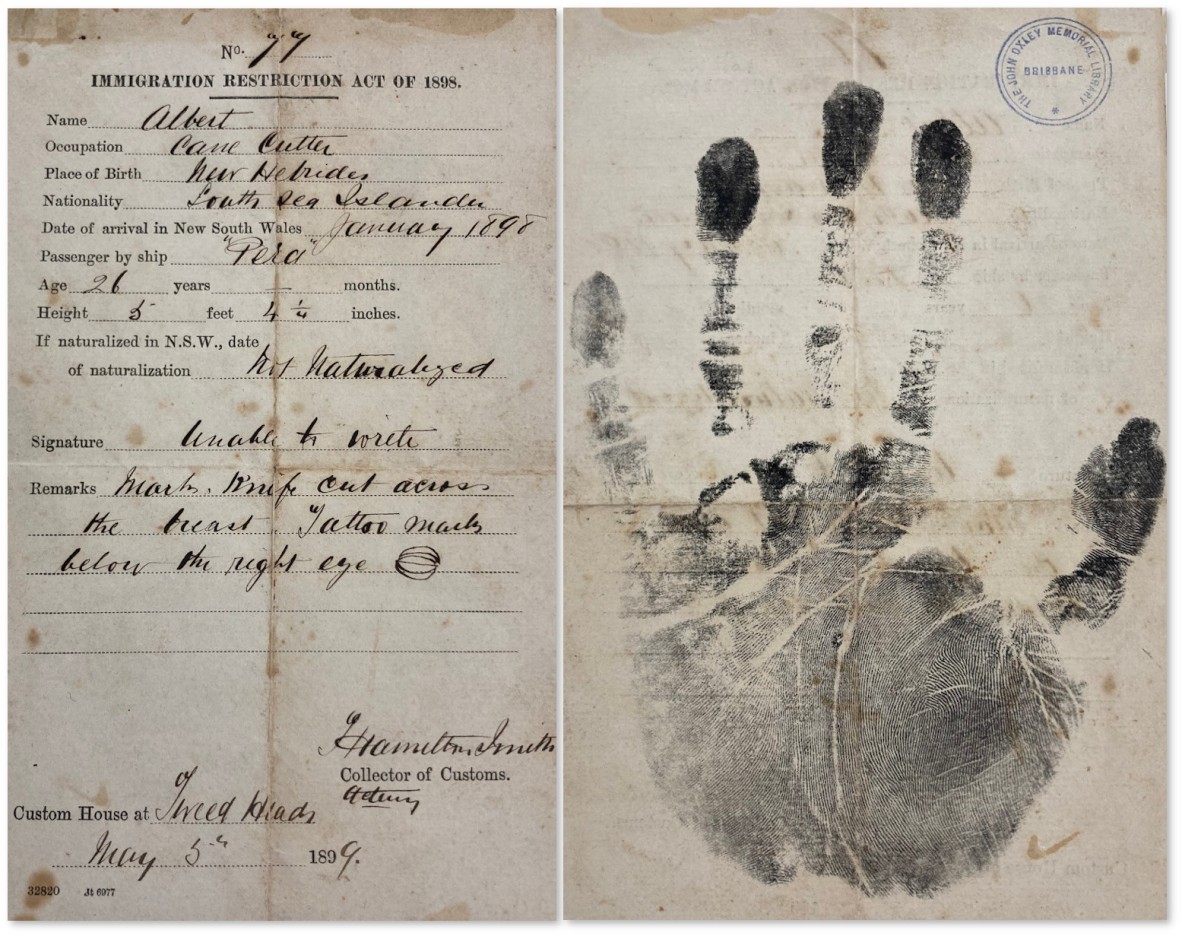
Immigration form, issued for 'Albert' 5 May 1889 front and rear view OM79-17/28 John Oxley Library, State Library of Queensland
Number 2:
This popular blog post shares the story of Maria, an iconic Aboriginal woman living in the Childers community. Maria is interesting and unique as she received and wore a brass Kingplate given to her by European settlers of the area, pronouncing her as a "Queen". It was a rarity for an Aboriginal woman to receive this acknowledgement. James Butler, a local solicitor, gifted Maria a kingplate that simply stated "Maria, Queen of Childers", which allowed her a certain status within the Childers community. Because of this rarity Maria appeared in lots of photographs during her life, something very useful to historians today. Read more of this fascinating blog for more information on Maria.
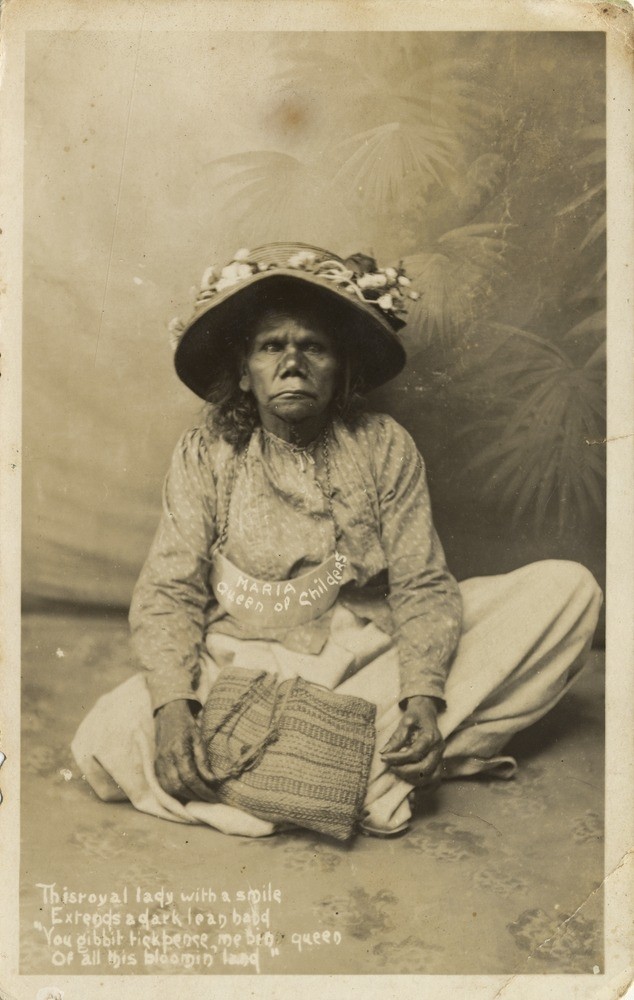
Maria, "Queen of Childers", Queensland, ca. 1908. 4831 Postcard Collection. Image number 4831-0001-0028. John Oxley Library, State Library of Queensland.
Number 1: The most viewed John Oxley Library blog posted in 2021 is...
A Suburban Oasis: Sunnybank's Oasis Swimming Pool & Gardens
For decades there was an Oasis, a much-loved complex of pools and tropical gardens located right in the middle of suburban Sunnybank in Brisbane! The Oasis Swimming Pool and Gardens was eight acres of lawns, tropical gardens, three swimming pools, a children's wading pool, playground, miniature zoo of native birds and animals, a tearoom, dance floor and reception centre that was used for many local weddings and events. The tropical gardens themselves attracted national and international attention.
This blog highlights the wonderful photos of this facility through its 51-year life span, from 1938 to 1989. John Oxley Library has collected photographs, postcards and manuscripts relating to the Oasis Swimming Pool and Gardens.
Other Blogs
Comments
Your email address will not be published.
We welcome relevant, respectful comments.